#Juraj Jánošík
Explore tagged Tumblr posts
Text
Žíš, to bolo kinematografické obdobie! Tri roky, tri koprodukčné filmy - Bathory (2008), Jánošík, pravdivá história (2009), Legenda o lietajúcom Cypriánovi (2010).
Všetky sú nejak hateované, pretože na Slovensku milujeme kydať na vlastnú tvorbu a mudrovať ako skvelo vieme rozoznať lepšiu kvalitu v zahraničí. Ale za mňa fenomenálna trojka, ako otec-syn-duch svätý a nepýtajte sa ma čo z toho je kto.
Bathory
Nepopieram, Báthory si s históriou tak trocha dosť vytiera prdel a ešte má drzosť tváriť sa, že to TOTO je ten skutočný priebeh udalostí. Z predátora v pozícii moci urobiť obeť a zviezť sa na trende ženskej emancipácie je bezočivé. Lenže on to ten Jakubisko vykonštruoval tak dobre. Jeho zápletka proste nemá diery. Respektíve mne do očí nebily. Ak niekomu áno, ozvite sa. Proste do detailov vyskladaná alternatívna história, ktorá surfuje na známych okolnostiach ako Jay Moriarty po Maverickoch a vyzerá pri tom echt štýlovo. Atmosférické polodivé Uhorsko s počínajúcim napätím medzi katolíkmi a protestantmi, lavírovaním medzi Habsburskou nadvládou a osmanským dotieraním na fronte? Mňam. A hlavne v porovnaní s tým francúzskym pokusom od Julie Delpy (snaha chvályhodná, ale dosť mimo terč). Menšie a väčšie zrady a nešťastné chyby? Irónia, že svedectvo, ktoré zachytávalo pravý priebeh zatknutia a bolo odovzdané ako prejav podpory, nie je využité nadriadenými na jej podporu, ale len na vydieranie jej oponenta pre vlastné obohatenie? Šachová partia, kde každý tratí, ale jeden napokon víťazí aj v smrti? Ako trpké suché víno z Karpatských svahov. Anna Friel v roli Erzsébet? Spanilá, s ohnivou charizmou tigrice, verila by som jej cholerickú sériovú vrahyňu, aj nepoddajnú aristokratku, ktorá proste prehrala politický boj. Aj tú parochňu odpustím. A na šaty zas nemám to srdce sťažovať sa. To s Cimrmanovskými mníchmi ma strašne vytrhávalo zo zážitku, to tam proste nemalo byť (čo vôbec má slovenská produkcia s komickými dvojkami, žandári v 1890 tiež takí odveci). Ale tie vynálezy sa stupňovali do takého absurdna, že to začalo spĺňať definíciu "so bad, it's good". Strašne si želám, aby sa neulakomili na veľké meno ako Caravaggio a neznásilňovali mu životopis, pretože zápletku mohli mať aj s fiktívnym anonymným maliarikom. Nemám ktovieaký vkus, ale proste ma to bavilo a vidím v tom kus dôkladnej roboty.

Jánošík
Trošku sa to potáca od folklórneho čísla k folklórnemu číslu, s narvanou romantikuš zápletkou(ami) a hrdinom pripomínajúcim slepé kura (len miesto k zrnu pod klát prišlo). Lebo tvorcovia tápajú, čím vlastne film vyplniť, do čoho to pospájať. To je tak, keď legenda je väčšia než predloha. Rozsypané je to ako ten povestný hrach. Ale aj jeden rozprávkový Janko bol len malý Hraško a predsa valibuk a tie rozsypané zrná majú každé čo to do seba. Jednotlivé osudy, zdrvené nádeje a neschopnosť prekročiť svoj tieň, či len šľapnutie do echt smoly. Napríklad párik dezertérov, čo sa má k sebe ako psi, ale spoločné prežité ich spolu spútalo príliš tuho a tak sa do seba púšťajú a púšťajú, až kým jeden z nich druhého nechtiac nezabije; alebo pľuhavec, také ASPD v kocke, rovnou mieru robiaci problémy iným aj sebe, lapený v nefunkčnom vzťahu a vylievajúci si zlosť za stratu dieťaťa na tom, kto mu ho nepokrstil, kým žilo, vodca zbojníckej bandy, ktorý ním byť ani nechcel, ale mu to predošlý nanútil z vďačnosti za pomoc z väzenia, pretože chcel valašku zavesiť na klinec a usadiť sa pod iným menom. Film prestupuje istá melanchólia, mrak chmúrnych vyhliadok zas a znova plávajúce popred jas prchavého triumfu. A Jurko nie je žiaden revolucionár, len trocha drzý chalan snažiaci sa kormidlovať plťku na rozbúrenej vode, so snami nie väčšími, než trocha pohodlnejší život vedľa tej, čo sa mu zapáčila (a nie tej, čo mu do vína naliala pochybný dryák, aby ho pretiahla). Slávna družina pod hrdou prísahou trhá samu seba a akurát, keď si jeden myslí, že je už von, pasca sklapne. Malosť aj malebnosť, hrubosť, poverčivosť, panská brutalita, chlapčenská naivita, násilie bez slávy, aj sladká neha a iskrivá živelnosť. Nájde sa aj nechcene vtipný moment, napríklad keď peší zbojníci zdrhnú drábom na koňoch a to sa tam jeden z nich dobre že astmaticky nedusí. Ale aj silné ako výraz starého sedliaka, ktorému syn naposledy vydýchne v rukách, babička rozprávajúce o sile hliny a tíšiaca muky slovami, že to už dlho nepotrvá, milostné prskanie bubliniek pod kuchynským stolom, sychravé ráno tichšie o dych, čo zastal, kým ty si spal, detail na chlapča sledujúce historický okamih.

Cyprián
Najmenej divácky príťažlivý z trojice a zároveň asi najkvalitnejší a najduchaplnejší. Totálne komorná záležitosť. Nemôže lákať na vysokú politiku, šľachtickú okázalosť, množstvo akcie a lokácií, či veľké gestá. Ani to meno nie je tak slávne ako predošlé dve. Cyprián, akýsi kartuziánsky mních liečiteľ, čo napokon jedného dňa odletel z Troch koruniek na geniálnom stroji. Čo už len s takou tématikou? Tak napríklad tak trocha svätopavolské rozprávanie o tom, ako sa zatvrdený chlap stal pravým opakom toho, čím býval. Len nie náhlym zázračným zásahom z nebies, ale postupnými ranami osudu v podobe vracajúcej sa minulosti aj milosťou tých najúbohejších. Jean Valjean by rozumel, ako dobre by len rozumel. Ale vina nášho niekdajšieho pytliaka na osude dieťaťa, na ktorom si hojí svedomie, siaha hlbšie a do vena mu nemôže dať nič. A aj po rokoch zžívania sa s kresťanskými princípmi len ťažko premáha túžbu po pomste, keď sa znezrady pod ruky dostane úhlavný nepriateľ. Nevybuduje nič nové, len drží vigíliu pri zmierajúcom svete, v ktorom sa znovuzrodil, aby sa učil strácať. Do toho preklad písma svätého, Da Vinciho zápisky, novoveké trestanie zločincov, Jozefínske reformy, hlas láskavosti vedľa hlasu trefnej tŕnistej kritiky. Film o pokore, film o zmierení, keď nič iné, než zmierenie neostáva. Márnosť nad márnosť všetko pozemské.

Za mňa veľká škoda, že to nemalo dostatočný ohlas, aby sa v tejto línii pokračovalo. Mohli sme sa v tom po krôčikoch zlepšovať a ak aj nie, aspoň by sme zmapovali viac z našej histórie a v rôznych ďalších príchutiach. A teraz ma ospravedlňte, idem totiž na striedačku počúvať Láska a smrť od Haberu a Lietajúceho Cypriána od Smatanovej, lebo som sa už zase dostala do nálady a tie dve piesne sú moje srdcovky.
youtube
youtube

#juraj jánošík#lietajúci cyprián#erzsébet bathori#slovac movies#slovenské filmy#historické filmy#raný novovek#zbojník#mních#šľachta#historical movies#early modern#Youtube
9 notes
·
View notes
Text
nikdo nechce počúvať moje juraj jánošík force-fem fantázie. jebať tento blbý baka život.
#hmm. tento post je možno príliš. ... no. Príliš. na česko-slovenské publikum#ale ja to risknem#slovensky#čumblr#ťumbľr
62 notes
·
View notes
Photo
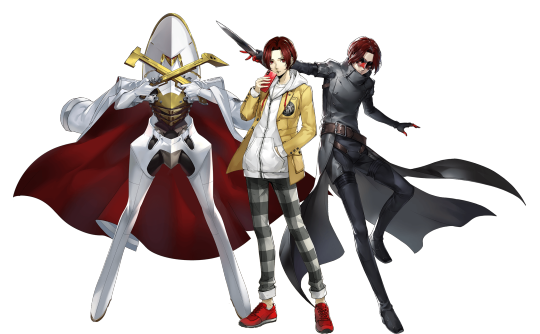
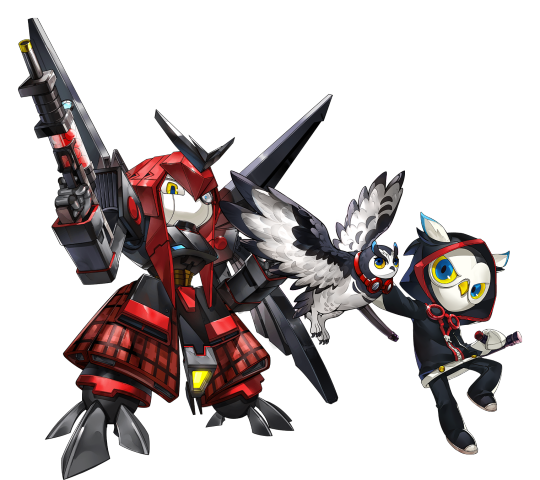
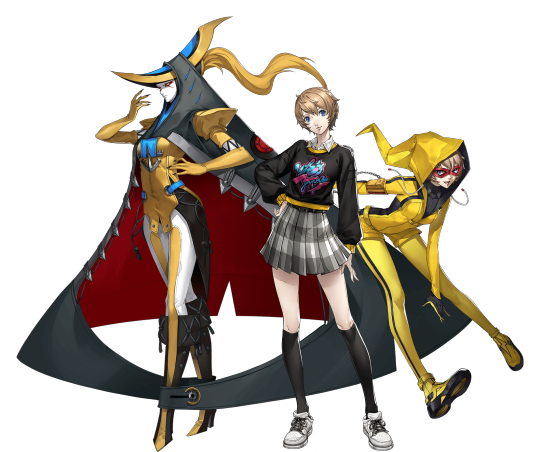
okay so apparently the shiny new thing is much shinier and newer than I thought, here’s a rundown of what info I can find
The protagonist has no official name yet, as is typical. He’ll probably get an unofficial and official one later, much like Akira/Ren and the previous protagonists. His codename is Wonder.
His Persona is Janosik, presumably based off the Slovak highwayman Juraj Jánošík. Though the real Jánošík was understandably Just Some Guy (of the robber variety), his name has been attached to the concept of a folk hero comparable to Robin Hood – someone who steals from the rich and gives to the poor.
His design seems to be directly based off of Joker’s, to the point I’d wager that they probably share (or at least have extremely similar) model rigs. He wields a knife.
☆ ★ ☆ ★ ☆ ★
Our little animal dude this time around appears to be an owl named Lufiel / Luffy. His codename is Cattle for some reason??
His Persona is Rob Roy, who takes on a distinctly mecha appearance for being based off a Scottish outlaw. Rob Roy, real name Robert MacGregor, became a folk hero within his own lifetime after a dramatized account of his life (The Highland Rogue) was published in 1723; MacGregor was 52 years old at the time.
Like Morgana, Lufiel’s appearance switches between “fairly normal animal” and “just a little guy” depending on which world he’s in. Also like Morgana, he can transform into a vehicle and transport the other main characters. He appears to wield tonfa.
☆ ★ ☆ ★ ☆ ★
The third and final identified member of the main cast at the moment is Motoha Arai, codename Closer.
Her Persona appears to be Arveda, though don’t take that spelling to heart. Given the nautical-themed appearance, I THINK it’s based off Alfhild, Viking pirate and daughter of Geatish king Siward. When her father arranged for her to marry Prince Alf of Denmark, Alfhild ran and became a pirate instead, captaining crews of other female pirates and raiding along the Baltic coasts.
Ngl I’m pretty sure she’s the final form of that one untextured model found in P5′s data. God help me but I don’t know what to call her weapon, it’s a chain with a weight on the end?
☆ ★ ☆ ★ ☆ ★
Other stuff of note:
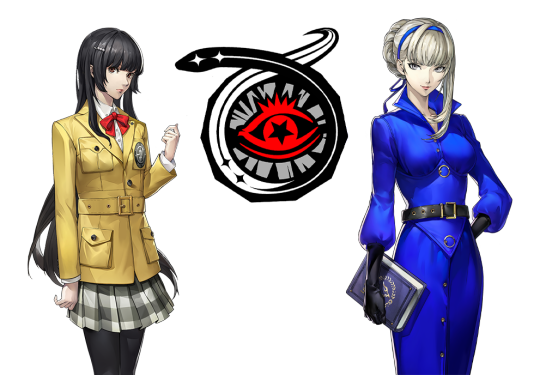
A female student at Kiba Kokatsu Academy, which is the featured high school this time around. It’s unclear if this character will join the main team.
The design of a strange new app which, like the MetaNav, appears abruptly on phones, can’t be deleted, and allows access to a separate world.
New Velvet Room attendant! Her name appears to be Merope, breaking from the Frankenstein character naming convention the other Velvet Room attendants have followed.
#persona 5 the phantom x#persona phantom of the night#p5x#lufiel#arai motohane#arai suwa#merope#p5x luffy#p5x merope#Kidd speaking#not aesthetic
236 notes
·
View notes
Text
Got bored and decided to do a basic Wiki search of the new personas + new Velvet Room attendant name.
Jánošík (aka, Juraj Jánošík): a Slovak highwayman who robbed from nobles a la Robin Hood. His story is mainly known in Poland and the Czech Republic, and he is a symbol of resisting against oppression.
(Interesting that Wonder’s Persona is like Robin Hood. While that archetype of a person stealing from the rich and giving to the poor is a thing, considering one of Goro’s Persona is Robin Hood...maybe there’s a connection between them, or a hint of what this game and the world going to be about via Goro. Or not. Again, a common archetype. Wouldn’t be surprise by this, consider Atlus are jerks regarding Goro’s fate that is now just annoying.).
Awilda: A Scandinavian female pirate from the 5th century. The daughter of an Scandinavian king, Awilda got so impressed with a prince of Denmark, who was battling her at the time, she revealed her true identity and married him.
(That means for sure Arai is connected to the baseball man with the ‘Palace’. Desire. Still confused with the terminology at the moment. She’s might be a gender flip of Ryuji’s character and his arc. I hope that somehow, these two meet and talk to one another.)
Rob Roy: Full name Rob Roy MacGregor, he was a Scottish outlaw who partake in the Jacobite rising in 1689 (and others), and later became the head of his clan, watching and protecting cattle from raids. Rob Roy also had a feud with the Duke of Montrose at the time and robbed his cattle.
(Honestly speaking Rob Roy’s life is a lot to give the basic somehow. But at the very least I know why Luffy’s codename is now ‘Cattle’. I can’t find any connection between Rob Roy and owls though.)
Merope: A common name in Greek Mythology. One Merope for instance, was the queen of Corinth, the foster mother of Oedipus. Another Merope was a water-nymph. Another Merope was a princess who the hunter Orion was engaged with, and was later assaulted by. One last Merope to be mention here, is Merope of the seven Pleiades. The youngest of the seven sister, this Merope married the mortal Sisyphus, and thus became mortal herself.
(Looking at Merope’s official artwork, she lacks the well-known golden eyes of the rest of the attendants P3 onward. She’s has more in common with Belladonna, Nameless, and the Demon Painter. Okay, the last two don’t show their eyes, but Belladonna lacks the golden spark too! I think and hope Merope is someone to keep an eye on. hehe. eye on.)
#persona#persona 5#persona 5 x#p5x#wonder persona#arai suwa#luffy persona#merope#this is a text post#anaylsis#theory
113 notes
·
View notes
Note
I have a theory; and by theory I mean headcanon that since wonder’s persona is based on a Slavic figure (aka Juraj Jánošík) that wonder is half Slovakian and I feel like if I won’t share this litlle hc i will explode
Oh, that's cute, I like that!
6 notes
·
View notes
Text
My tag for this series is 'fairy tales'.
#polls#fairy tales#folktales#babes in the woods#the star child#henny penny#chicken little#issun boshi#juraj janosik#janosik#the black bull of norroway#the golden key#the boy and the wolves#the king of the golden mountain
14 notes
·
View notes
Text

Juraj Jánošík - Jumpman.
#juraj janosik#juraj jánošík#folk#folk hero#bandit#bratislava#slovakia#city#canon eos#square#danube#street art#stencil#jumpman#jumpman23#23#jordan#airjordan#air jordan
10 notes
·
View notes
Quote
„Teď bych rád s Aničkou…“ „S Aničkou, s Aničkou,“ pitvořil se otec, „copak já vím, která je která? Mám sedm dětí a samé dcery, nové už naštěstí nepřibývají, protože manželka vloni odešla na věčnost. Všechny moje holky spí tam na peci pod duchnou, vyber si spánembohem, která se ti líbí.“
Juraj Jánošík® proti Dračímu řádu (Svetozár Olovrant)
#Juraj Jánošík® proti Dračímu řádu#Svetozár Olovrant#Slovak#česky#books#quotes#V#Juraj Jánošík#Aniččin tatík#otec roku
0 notes
Photo

The village of Terchová in the Malá Fatra mountain range, Slovakia. Statue of the Slovakian Robin Hood - Juraj Jánošík, a famous highwayman and defender of the poor.
July 2017
22 notes
·
View notes
Text
Juraj Jánošík????

tag yourself (já jsem týpek v montérkách)
58 notes
·
View notes
Text
Thanks @the---hermit for tagging me 🌼
A book that starts with S: Ján Botto: Smrť Jánošíkova (The Death of Jánošík)
Slovak poem from 19th century retelling the capture, prison and hanging of Jánošík (highwayman and a hero, important for us. Something like a slovak Robin Hood). We had to read it for the maturita exam and I was so done then, but now I came to enjoy it - especially the descriptions of nature, calling for freedom and his wedding. Part of the story is told in Kráľova hoľa (King's bald mountain), which is another important symbol in our literature and we have a song called On the King's bald mountain, where a young man tells his friends that his wedding will be there, stars shall be his bridesmaids and a canon ball his bride. Another instance of death and wedding being tied to one. And in original it starts with S, so it could be ok.
A book with birds on the cover: Terry Pratchett - The colour of Magic
Almost done with this one, only few pages left and I must admit that I loved each and every one. Fun, whimsical, very enjoyable. Bought it as a reward after an exam season. There are few ravens on the cover.
A book with insects on the cover: G. R. R. Martin - Sandkings
A collection of three sci-fi short stories: The Sandkings (which was great and hated in and couldn't stand the idea of mess of bugs for weeks), A Song for Lya (interesting premise, enjoyed it, still annoyed about few things that are, unfortunately, very persistent in grrm's writing) and The Glass flower (my forever fave, love the idea, love the story, beautiful translation to the point I'm afraid I won't enjoy the original). Originally my grandmother's. Pulp fiction with an illustration of sandkings (bugs).
A book with flowers on the cover: James Baldwin - Giovanni's room
One of the few books I read this past year and it's definitely one that I will hold dear for a long time. Loved the way the story is told, the atmosphere was almost touchable - there was no way this story could have a happy end, but it was a pleasant suffering. My copy has leaves on the cover.
A book that takes place in the spring time: Juraj Červenák - Vládca vlkov (The Ruler of Wolves)
Slovak historical fantasy - Slavic mythology and Tatar's. Can be quite gory and explicit, but also very funny and packed with just enough tension and action to make you want more. One of my fave contemporary slovak authors, his historical detectives are amazing. One of the formative book of my youth. At least some parts of the story are set in spring.
Thank you so much for tagging me🌱 so I tag @mossy-studies and @gushuwa and anyone who wants to, no pressure
#kávičkovanie#tagged#🌼#a little edit - i wrote this few days ago and forgot to post it so now I've finished the Colour of Magic#and i must say that i really enjoyed it#hopefully i will read at least some of the sequels this summer
4 notes
·
View notes
Note
ALSO HI one more rec that’s not medieval but still good is Juraj Jánošík, a really cool folk hero who later became a symbol of resistance <33 I think you’d like him so gehcghedb here u go!! take my anticapitalist folk hero!!
!!!!!!!!! oooh okay okay 📝👀 i GOTTA know everything about this dude now<3
4 notes
·
View notes
Text
The Role of the Gentleman or Lady Thief and their Detective/Cop/Agent Part 1
With Carmen Sandiego 2019 starting to heat up I figured that it would be a good time to explain why characters like Chase, Julia, and formerly Ivy and Zack were important to the over all story and why these dynamics are key in telling the story of the idea of Cops and Robbers.
To start with we have to go all the way back to the days of the Highway men and the likes of Robin Hood.
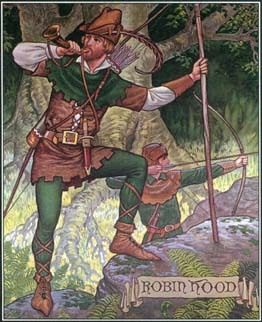
So let’s start with that. The myths around Robin Hood have grown over the years, most of which had the elements in there of him being a free spirited outlaw that was in Nottingham and being the enemy of the Sheriff came from earlier poems such as the Robin Hood and the Monk show that while he’s got some good in him, he’s not friends with the King, and that his robbing maybe more selfish, and the actions of the Merry Men are more in line with that of a thriller than the more epic adventure that we see later.
Robin’s stories changed over time from darker stories with thriller like plots, to comedic at times, and over time grew to show Robin changing from a character that simply robbed because of the fun of it, to someone who was robbing for the people, and that he could be outwitted by others and then they are invited to join with him.

Robin representing the lawful outlaw, the thief that while forceful to those that don’t fit into his moral code, can be gallant and kind to those that he finds right and just. He’s a Chaotic good type character in this case, leading into the Sheriff who falls under the idea of the dull witted idiot at times who get’s tricked and had by the clever robber. Over time Robin became a noble over a commoner, where as the Sheriff was always seen as part of the rich nobles that caused issue for the lower classes.
Thus a lot of the idea of the noble thief and the arrogant detective came into being. Though this dynamic wouldn’t stick around for long with these two as the Sheriff became more and more of a villain and Robin more of a heroic person who was only robbing to return the wealth to those that needed it.
Stories about Robin and his ways of stealing, namely their ballads, over time, influenced later writers who wrote about the exploits of real Highwaymen:
Later robber heroes included the Cavalier highwayman James Hind, the French-born gentleman highwayman Claude Du Vall, John Nevison, Dick Turpin, Sixteen String Jack, William Plunkett and his partner the "Gentleman Highwayman" James MacLaine, the Slovak Juraj Jánošík, and Indians including Kayamkulam Kochunni, Veerappan and Phoolan Devi.
These robbers were seen as heroic due to their bold actions robbing people face to face. A lot of the actions of later Gentle thieves can be attributed to the legends of these Highwaymens’ characters.

James Hind -Was a royalist who apparently helped other Royalist escape from troubles, gave money to poor royalists and also refused to rob cavaliers. A lot of his exploits were embellished, painting him as a Royalist Robin Hood.

Claude Du Vall - According to popular legend, he abhorred violence, showing courtesy to his victims and chivalry to their womenfolk, thus spawning the myth of the romantic highwayman. -from Wikipedia. Du Vall is most known for inspiring a lot of the legends around the “Romantic Highwayman” legends.
John Nevison - with the nickname Swift Nick, due to a dash of 200 miles from Kent to York to create an alibi after a robbery, Nevison was known for never using violence against his victims, always polite, and only robbing the rich.
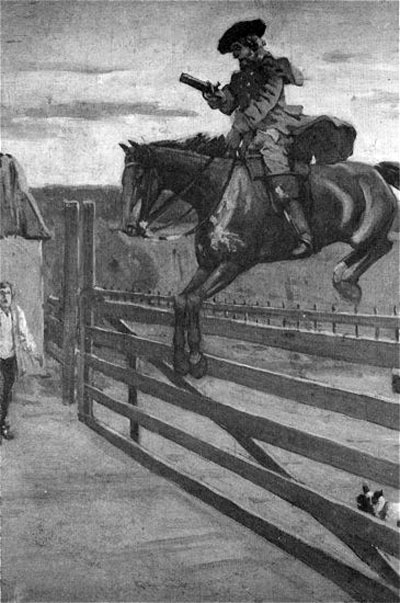
Dick Turpin - was nothing like his legend, and was over time turned into an almost robin hood like figure. The reason that his name is used so much and linked with the other gentlemen Highwaymen is due to the book Rookwood, where he’s used as part of the plot and comes off as far more lively than the mains.
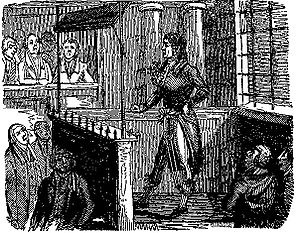
Sixteen String Jack - was known for his colorful costumes, wit and charm and typically robbed so he could afford said expensive clothing.
William Plunkett -wore a venetian mask and tended to be polite to women and only stole because he “was obliged to do so” not out of wontoness. He actually escaped with his life.

John MacLaine -a former son of clergy who became a grocer and, after his wife died three years after their marriage, went bankrupt and became the partner of William Plunkett. He, like Will, was seen a courteous and restrained when they were holding people up.

Juraj Jánošík -the Slovakian Robin Hood, who’s stories became more legend and was later used as a symbol against oppression. After helping another robber escape from jail, the two started a band, which Juraj became leader of at the age of 23, when the former leader left to settle down outside of the kingdom of Hungary. “ Most of their victims were rich merchants. Under Jánošík's leadership, the group was exceptionally chivalrous: They did not kill any of the robbed victims and even helped an accidentally injured priest.[5] They are also said to share their loot with the poor and this part of the legend may be based on the facts too.[5] -Wikipedia”
Kayamkulam Kochunni -is India’s Robin Hood. Like Juraj, Kayamkulam has become a legend and a bit of a deity as well. He was said to have robbed from the rich to give to the poor, focusing mostly on merchants that were wealthy. What’s interesting is that he’s one of the first to be well known and have a detective that is following him around, by the name of “ Arattupuzha Velayudha Panicker” who was a known warrior and defender of the oppressed, and who supposedly captured Kayamkulam, leading to him being placed in jail for a year where he died.
Veerappan -a more modern day version of Robin Hood in India, who was active in the late 1960s and into the early 2000s. Unlike the other members of this, he was not known for giving back to the poor, rather his status comes from the fact that he was elusive.

Phoolan Devi -a lady bandit who’s last name was used as a title for her. Her history in India was well known, and she later was released from jail after she and her gang were arrested for the massacre of a rival gang that had captured and raped her. However publically she was somewhat praised for her actions. She later was elected to the Indian parliament but was assassinated in 2001 by a former member of the gang that she had killed.
Other Highwaymen tended to do so for revolution or rebellion based actions, such as those in Ireland during the 17th to the 19th Century.
In 17th- through early-19th-century Ireland, acts of robbery were often part of a tradition of popular resistance to British colonial rule and settlement and Protestant domination. From the mid-17th century, bandits who harassed the British were known as tories (from Irish tóraiḋe, raider; tóraí in modern spelling). Later in the century, they became known as rapparees. Famous highwaymen included James Freney, Count Redmond O'Hanlon, Willy Brennan, and Jeremiah Grant.[10][11]
James Freney - originally lost his family lands in 1650, after being a well off family that was considered a noble. As a young man he wound up working as a servant to another well off family, married, and had a family. He joined with a gang after the towns fees caused him to close up his pub. Like a number of other Highwaymen he was known for being polite for the most part, and saw his actions as a way to get back at the English.
Count Redmond O’Hanlon - his family at one time was a favor of Queen Elizabeth the first, however due to them siding with the Catholics during the events of the Irish Rebellion, his family got their lands seized during the Act for Settlement, where in they lost all their status and lands to England and it was given away to other land holders. Redmond was known for being an excellent actor, mimic and persuasive speaker who used these skills. Again he’s seen as a bit of a Robin Hood figure.
Using this as a base we can see how these men and women of reality became a sort of base for fictional characters, who later became part of the genre of the Gentlemen thief. Furthering the evolution of these characters was the idea of the opposition of the thief in the form of the rival police officer, typically either a detective/cop/Agent of Interpol who has been sent out to stop the likes of the Heroic thief.
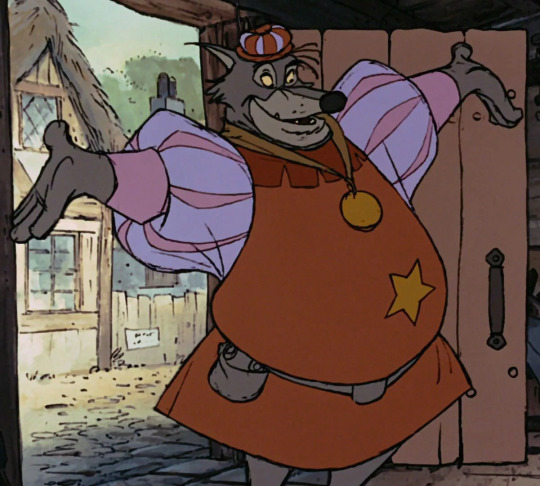
Subsequently, a change happened between the time of the Sheriff from Robin Hood to the time of someone like Zenigata, from Lupin the third. The first changes could be seen in the idea of making the opposite of the thief be someone that has a more personal reason to want to capture the thief, or have a more sympathic reason behind their being the rival to the thief.
Another aspect added to this was that, in some cases the detective had it wrong about the thief and their heroic actions were being read wrong by the law. Best example of this early on was is the character of Javert from Victor Hugo’s Les Mis. written back in the 1860s.

Javert’s story focuses a lot on how he wants to capture Jean because Jean ran from his parole, and Javert feels like he must catch him, even after years of the man reforming his life. One of the aspects about this that draws into the modern day Phantom Thief idea, is that of the character that at all costs, MUST, capture the thief. Javert devotes his life to it, dealing with the fact that he grew up inside a prison and can’t for the life of him deal with the idea that a criminal can change. This leads to his death, and the obsession of capturing Valjean.
The idea of the obsessive detective focusing their life on the chase digs into later day characters that are like Javert, but less suicidal.
The famous Scarlet Pimpernel deals with one such character. While the Pimpernel is no thief in the normal sense, he seeks to “steal” the lives of innocent nobles from the gallows during the french revolution.
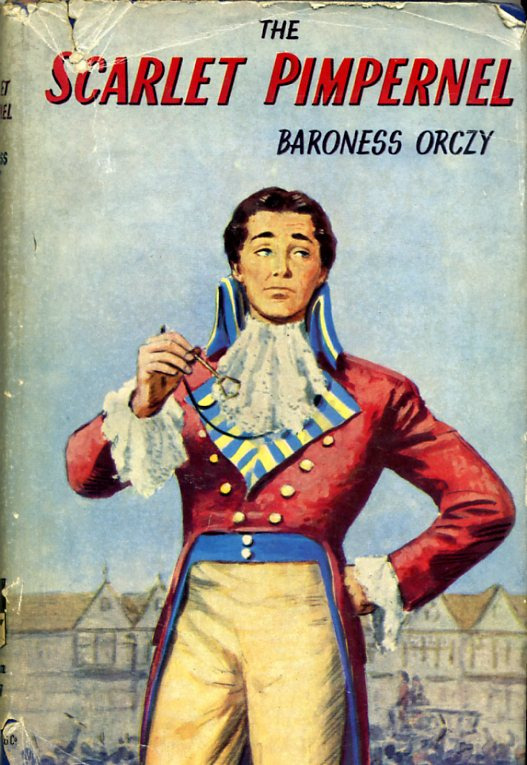
Created by Baroness Emma Orczy, Sir. Percy Blake is our lead (and shares with Carmen the love of Red) who through out the story plays up his foppish image to cover for the fact that he is the head of a ring of men and women who are covertly, under the black sky of the night, going to France to break out and save various people from death during the French Revolution. Blake is in a lot of ways the first user of the secret identity. But he also has a lot of the qualifications of being a Gentlemen Thief, including not harming people unless they attack first, and being ever so delightful to those he’s “robbing.” He’s a skilled fencer, an excellent actor, a master of disguise, an intuitive improvising and imaginative planner, and a quick on his feet escape artist.
Counter to him runs Citizen Armand Chauvelin, a cunning and ruthless man that is for the most part fearless and doesn’t care for his own safety -save where he figures that death is the only outcome of a situation. He’s highly intelligent and, in the past, was a close friend of Percy’s wife. During the stories we see him become the rival or counter to Sir. Percy, figuring out that the man is the Pimpernel but never having a chance to catch him, as Percy always eludes him, causing their conflict to keep dancing around all through the series.

Being the opposite of Percy, Armand plays up the darker aspects of the Agent. He’s shown wearing dark clothing, that he tends to brood more, and certainly while having some sense of mercy and sympathy, he feels that Percy should be stopped as he’s breaking the law in France. Much like Javert, Armand becomes slightly obsessed with capturing and outwitting Percy, but he never gets the chance to win.

This brings us to the idea of the inversion of the detective for the thief in the form of A.J. Raffles. Raffles was created by Sir. Arthur Conan-Doyle’s brother-in-law, E.W. Hornung, a poet and author. Raffles was created as a opposite to Holmes. Like Holmes there is a sharpness to his character’s look, though unlike Holmes, Raffles is far more of a social man and lives competing lives as a gentleman and a thief. It’s interesting to note that Doyle did not particularly like Raffles as he felt it was a slight to his character. Although of the two, Holmes has been used more frequently. Raffles also seems to share the whole “playing a role” to set up for his crime, but also feels that while he steals for himself, he tries to pick on people who can spare the theft.
This becomes important as later day thieves tended to play the part of hero and villain all in the same story in some cases.
The biggest and most well known though of all these Thieves and the most heavily inspired for western writers, is Arsene Lupin.

Pulling from Pierre Alexis Ponson du Terrail, Rocambole (an adventure hero that starts off as a thief like character and later became a heroic person), Arsene acts as a thief, stealing things that he deems worthy and always leaving some form of calling card to where he’s going to strike next. However he’s usually not the bad guy and the true villain of the story is far worse than he is. Lupin traditionally didn’t have a counter until his creator Maurice Leblanc decided to pit him against Sherlock Holmes (changed to Herlock Sholmes due to Doyle requesting it). This placed the two master minds against one another for several stories. Pairing them up in some cases to solve a crime or having Holmes go against Lupin to catch him and the other villain.

This pairing later lead to the creation of other characters that have bad guy like reputations but are really heroes, such as the Shadow, and Judex -from France (who probably inspired the Shadow).
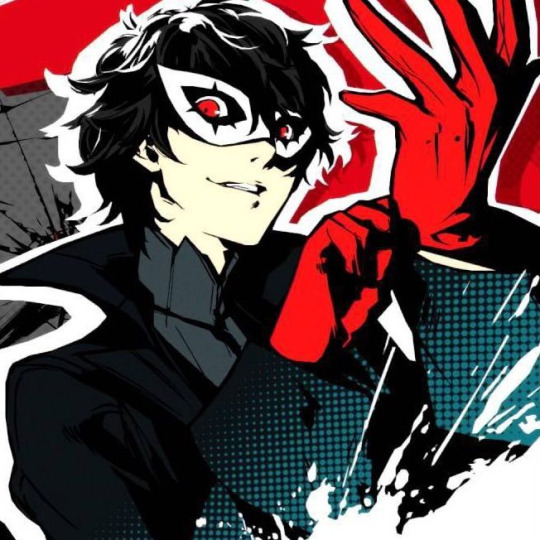
One of the Key elements to come from these thieves is that there is always a code of honor, which seems to stem all the way back from the days of the Highwaymen. This code seems to be:
Be charming, well mannered, and courteous to your target and others.
Avoid the idea of physical or emotional force or violence to steal
No intimidation when stealing
Only fight to defend yourself
Some thieves are already wealthy, others will take for material gain, but a good majority of them will steal not for wealth of money but for knowledge or appreciation of the object. A good number of modern thieves tend to steal things already stolen and return them to their rightful home, or correcting a moral wrong. In most cases it’s only from a wealthy or corrupt person, and only stealing one rare thing or as a challenge, typically leaving some sort of message saying they were going to take it. And once in a while they will give it back, because it was a “for fun” thing.
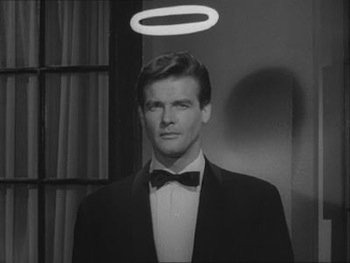
With the rise of other Gentlemen thieves in the west such as: The Saint, Thomas Crown, Jimmy Dale, Filibus, Danny Ocean, and various characters from comics (Gentleman Ghost, Catwoman, Penguin, Gambit, Black Cat) and many others, it doesn’t surprise me that Arsene Lupin became influential to Japanese writers.
Kaito Kid, Dark Mousy, Lupin the Third, and Saint Tail, all have their own opposing rival detectives, and each seem to steal in some way for good (save for those that also take for themselves).

Looking at Arsene Lupin III you have a similarity to the original character. someone who is mostly stealing for fun, but also he’s “ Acknowledged across the globe as the world's number one thief, Lupin is a master of disguise and deduction, marksman, and inventor of numerous handy gadgets. His fun-loving, foolhardy incongruity covers a brilliant mind always extemporizing and re-evaluating. As such, he has been responsible for heists no right-minded individual would believe possible. While occasionally arrested and jailed, typically by his ICPO nemesis Inspector Koichi Zenigata, he always succeeds in escaping unharmed.”
Lupin’s personality over the years has changed as the various versions of the anime has over time cooled his harder edges and made him more of a chivalrous goofball, who can get away with things. In some cases he’s doing it for the thrill, but in several situations from the anime and movies he tends to do it because he wants to do the right thing, and maybe earn some side cash. In any event in the anime he’s not without his side kicks, and of course there’s Zenigata.

Monkey Punch, the creator of Lupin the Third said that Koichi Zenigata and Lupin have a Tom and Jerry aspect to them, and the only way the series will end is when they are equals. Either they both lose, they both win, or they both retire. Zenigata is more in line with the idea of the detective following a life long passion. He is, much like Armand and Javert, obsessed with capturing Lupin and has shown over various shows that he cares for the younger thief.
The origin of Zenigata's and Lupin's mutual regard was based early in the series when Lupin had the chance to shoot the Inspector, but instead wished him well and escaped. Since then, an unwritten understanding exists between the pair where neither will attempt to cause the death of the other. Further, the two are best referred as unacknowledged friends; several occasions have occurred where Lupin and gang aided Zenigata out of a life-threatening situation. When a woman the Inspector loved was killed by a criminal gang, Lupin participated in avenging her murder. And when an old enemy of Lupin's shot Zenigata point blank while he helplessly watched, a wild motorcycle chase began to apprehend the killer, partly for Lupin to conclude affairs with the adversary, partly to avenge the (supposed) death of the Inspector.
On the other end for the pairing you have the Kaito Kid and Detective Conan.
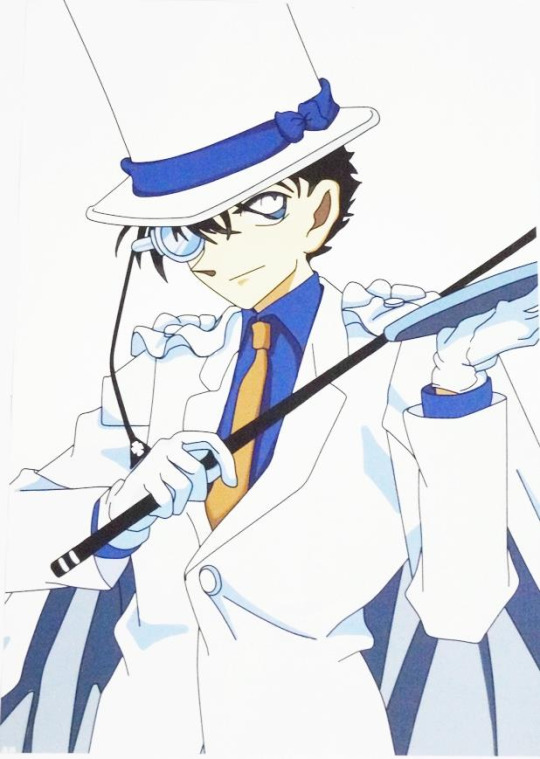
Now unlike Lupin who steals because it’s his way of life, Kaito Kid (aka Kaito Kuroba -yes that is his real name) does so to follow up on his family legacy and try to find the men that killed his father. The reason he steals isn’t for money or for fixing issues, no this is more of a personal thing. After taking the gemstones Kaito tests to see if they, under the moonlight, to see if the Pandora gem (a stone that has the ability to grant immortality) is inside for the express purpose of destroying it and keeping it from the hands of the organization that killed his dad. When he takes the stones, or any treasure he typically leaves a calling card, so the bad guys know what he’s going after so he can confront them, and later returns the items to their places.
Kaito doesn’t have an exact opposition, but normally if he is a bit of an antagonist in a story, that role goes to Detective Conan (aka Jimmy Kudo). Sometimes Conan is out to stop him from stealing something, but a number of times the two have teamed up as the organization that killed Kaito’s father was also connected to Jimmy becoming a small boy from a teenager. Kaito has played Jimmy from time to time, confusing friends and enemies for the young detective and also helping out when Lupin III showed up for his own heist in a movie. Jimmy though knows who Kaito is, yet he can’t pin any crimes on him.

The interesting thing about their conflict is that while Jimmy wants to stop him, he also knows that there’s more to Kaito’s actions than just being a thief, so unlike where Zenigata legitimately wants Lupin to reform, Jimmy knows that once Kaito finishes what he needs to do he’s likely going to stop being a thief, thus, while the chase is fun, unlike with Richard (the detective that Jimmy tends to knock out in order to explain the case) who sees Kaito as a thief, Jimmy knows that it will end and that in the end no one’s going to be hurt save the bad guys that killed Kaito’s father.
On the other side of things where in you have this idea of a pairing that has magic, you have Dark Mousey/ Daisuke Niwa and Krad/Satoshi Hiwatari.
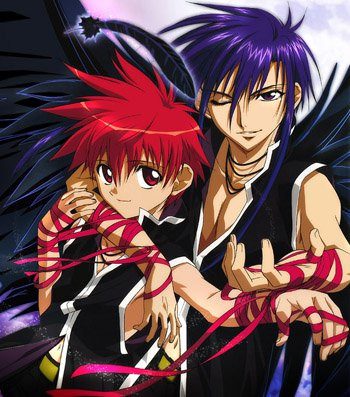
Where as with Kaito who uses tricks to preform magic, Dark/Daisuke actually uses real magic to pretty much create a situation that has a lot of real magic in their thefts. See in the case of D.N.Angel, the story actually revolves around a curse. Dark is a being that may, or may not, have been a real person at some point in time. He is part of Daisuke, a middle-schooler who’s family has this curse placed upon them, where the first born son will inherent Dark and become a thief. The goal, to steal items that have a magical curse that was created by the Hikari family. Long story short if Dark and Daisuke fall for the same girl then Dark goes away from Daisuke and he waits till the next person or the curse is lifted (I can’t remember because last I read they were liking two different twin sisters, and keep switching who likes who.)

Opposing Daisuke is Satoshi Hiwatari, who is actually the adopted son of the Police Chief and the heir to Krad, Dark’s opposite. He has little control on Krad and is the descendant of the man who made the cursed items. Satoshi cares a lot for Daisuke seeing him as a friend and wanting him to stop using Dark, but the fact is that it’s not a possibility until the curse is broken for both. Both boy’s have their “specials” (I don’t know what they’re called) come out when they react to emotions. Daisuke is to feelings of love from a special girl that he likes, and Satoshi has it when Dark comes out and there’s a sense of challenge coming from Krad.
The thing that’s interesting with this cat and mouse game is that Daisuke and Sataoshi general want to be friends, with Satoshi being the cold character to Daisuke’s more warm and genuine personality. While Satoshi wants to stop Dark from stealing thing, Daisuke wants to find a way to release Dark and Satoshi from the curse that’s upon them because he knows Krad is hurting his friend. The point of the thefts though comes down not to robbing the rich, nor returning something for justice but for the sake of canceling out something dangerous in human hands. The idea that the art piece is cursed by an emotion and that the feelings of that piece need to be fixed, usually something to do with love and sadness and that sort of thing.

Similarly in the actual magical thief department we have the character of Meimi Haneoka aka Kaitō Saint Tail or just Saint Tail in English. Like another magical girl thief Phantom Thief Jeanne, there are aspects of the magic girl series here. However unlike PTJ, Saint Tail deals more with the actions of actually stealing art rather than cleansing it and making it vanish. The difference here is that unlike Jeanne, Meimi is just using stage magic, much like Kaito Kid, so her actions are done with her own wit and guile. What’s interesting is that unlike the other thieves mentioned, Saint Tail is a thief that takes back what has been stolen.
Meimi’s goal is helping those who have had things taken from them or ease their troubled hearts, as her friend who is a nun in training gets to hear these issues and goes to ask Saint Tail for help in taking back what was stolen. Meimi, like the others above, has a rival detective in the form of Daiki Asuka who is also a classmate of her’s whom she classes with as he’s obsessed with catching Saint Tail.

What’s interesting about this set up here is that unlike all the others, where it’s male vs. male, this is male vs. female and, because it is a shojo series, there’s a romantic undertone to this story. Daiki, for his part, does seem to have a bit of a crush on Saint Tail but ultimately wants to bring her to justice, and in Saint Tail form Meimi does flirt with him. However the conflict comes down to the idea of her and Daiki not seeing eye to eye in their civilian lives, as Meimi has a bit of a tsudare sort of mask so that others don’t know she’s Saint Tail. Thus the two butt heads a lot, as both are stubborn, and Meimi is constantly grappling with her own jealousy for her alter ego having Daiki’s heart.
It’s not that often that you see this set up with the Detective and the thief eventually ending up as a couple (Yes this is a spoiler) since in most cases the thief usually has a side love interest that has nothing to do with his or her crime career (either the person is doing an alter ego thing, or the love interest doesn’t pay mind to their crimes) or they are working with them on their criminal sprees.
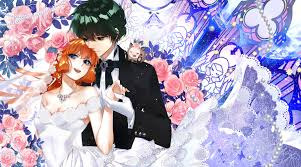
This means that Daiki and Meimi are a bit of a rare pairing, the only other one that springs to mind is Batman and Catwoman (though that has it’s own issues) and Sly Cooper and Carmelita Fox from the Sly Cooper games. However their cat and mouse game mirrors a lot of other Detectives and thieves. For Daiki the idea of catching Saint Tail means that he can prove himself to his dad who could never catch the “Fallen Angel” thief, who happened to be Meimi’s mom, and he feels that if he can catch her than it makes up for his dad not getting Fallen Angel. It’s interesting too that, as with Kaito Kid, Dark Mousey and Lupin III, Saint Tail leaves calling cards but with different reasons. Where as with Kaito it’s to lure out the villains who killed his dad, and Dark as a PR thing for Satoshi, or Lupin just to annoy Zenigata, Tail’s game is so that Daiki and the cops can arrest the person that stole the object in the first place and get them proof so that they will go to jail for their crime.
It makes their relationship far more complex than your traditional thief and detective.
The thing is that the role these two play opposing one another is a game of cat and mouse that is designed to thrill the audience. Viewers watch, or readers read, as the characters have to outwit one another. The thief must always be one step ahead of the detective. But never too far ahead, and the detective must always be one step behind but know the truth even if they can’t prove it.
This leads to some interesting dynamics in regard to the idea of the thieves that don’t steal for their own goal. While it does, at times, make the detective question if they are doing right by chasing them, the thief needs to always reaffirm to the detective that they should try to catch them. The thrill is in the chase for the thief too, and in some cases it is not just the fun that is being had, but also the goal in allowing the detective to become a friend and in some ways a companion to the thief.
Without the detective doing the chasing the challenge isn’t there, and, on top of that in the case of a robin hood like thief where they want the police to capture a worse criminal, then they feel like they are actually doing some law abiding things as well. In other cases, they only agree to give up to that detective or rival, and will only become lawful again once their mission is completed, or they feel like the two are then equals.
Part of the game for the gentleman or Lady Thief is that they will show a great deal of compassion for those that they are taking from in some cases, and also feel the same for the detective. In a few cases, as with Lupin and Sherlock/Conan, there’s a sense of admiration and appreciation for each other’s skills and intelligence. Or in other cases as with Sly and Carmelita or Tail and Daiki, there is genuine love and affection there that leads to romance.
It’s the sense of almost flirting and a chance to change the other persons view of the world. In a lot of cases the detectives can see the good in a person, as with Zenigata regarding Lupin, but also they know that what they are doing in in the wrong according to the law, and they want that person who could be an amazing good guy and ally to them to join them on the lawful side of things, rather than the chaotic good side.
So how does this all fit into Carmen and the others? Well this has gone on too long I think, so I’m gonna do that as a part 2.
#carmen sandiego#carmen sandeigo 2019#robin hood#phantom theif#gentleman theif#d.n.angel#dark mousy#daisuke niwa#satoshi hiwatari#krad#lupin iii#lupin the third#lupin the 3rd#arsene lupin#sherlock holmes#kaito kid#case closed#jimmy kudo#scarlet pimpernel#Les Miserables#a.j.raffles#saint tail#meimi haneoka#daiki asuka#inspector zenigata#koichi zenigata#sir percy blakeney
165 notes
·
View notes
Text
:DD
Well, our off-brand Robin Hood was named Juraj Jánošík (all the 'J's are pronounced as 'Y', the lines above some letters mean they're long and 'š' makes a 'sh' sound)(1688 - 1713). He also took from the rich and gave to the poor, and had a hella dramatic death: he once went to a pub to meet his girlfriend but the "police" caught him there, they charged him for all the murders he committed and sentenced him to death by hanging. But not normal hanging by the noose - no, no, they took this giant metal hook, shoved it into his ribs and left him there to bleed out/starve :)
And second was Ľudovít Štúr (1815 - 1856). He was one of the people who fought for Slovaks to have our own language and against the Hungarians who wanted us to have their language. He was the face of the revolution for the Slovak language back then. He only loved one woman in his 40 years of life, and even that not enough to be with her. He decided to focus only on the country, not on love. His death was iconic: one winter he went out for a hunt, slipped in an apple orchad, accidentally shot himself in the leg and almost bled out before being brought to his sisters house. He started healing there, but noticed his shot leg was starting to be shorter than his healthy one, and since he didn't want to live with a limp, he had the doctor stretch that leg, which tore the stitches and gave him blood poisoning 💀

1K notes
·
View notes
Text
Az RTVS-nek esze ágában sincs eleget tenni Hrnkonak. Jánošík marad a top 10-ben
“Jánošík rehabilitációja az emberek tudatában és emlékezetében ment végbe” – állítja az RTVS.
Nyitókép: Youtube.com/RTVS
A legendákkal övezett betyárnak, Juraj Jánošíknak még mindig nagy esélye van arra, hogy ő legyen az RTVS “A legnagyobb szlovák” című műsorának győztese.
A közszolgálati televízió nem vette figyelembe az SNS alelnökének, Anton Hrnkonak azon kérését, miszerint Jánošíkot ki kellene zárni a műsorból.
A nemzetiek alelnöke szerint azzal, hogy az RTVS beválogatta Jánošíkot a versenybe, megszegte a szabályokat. Hrnko ugyanis arra hívta fel a figyelmet, hogy a betyárt a deményi pap meggyilkolása miatt elítélték, de sosem rehabilitálták.
http://www.korkep.sk/cikkek/friss-hirek/2019/01/03/hrnko-azt-szeretne-ha-janosikot-kizarnak-legnagyobb-szlovak-cimu-musorbol
Az RTVS álláspontja szerint az a bíróság, amelyik elítélte a betyárt, nem volt igazságos. Mindemellett arról sem szabad megfeledkezni, hogy az akkori bíróságok a maiakhoz képest teljesen mások voltak, ezért hivatalosan nincs lehetőség Jánošík rehabilitációjára.
„Mindezek ellenére egy olyan szimbolikus rehabilitációról beszélhetünk, ami az emberek tudatában és emlékezetében ment végbe. Mindezt több száz olyan monda, dal és vers dokumentálja, amelyben Juraj Jánošíkot nemzeti hősként ábrázolják. Erről tanúskodik az ankétban lévő szereplése is“
– állítja az RTVS.
A televízió szerint a szakemberekkel folytatott beszélgetések és dokumentumok sokkal jobban rávilágítanak majd a betyár valódi életére és tevékenységére, s romba döntik majd azokat a mítoszokat, amelyek hosszú évek óta élnek az emberek körében.
Aktuality.sk
0 notes
Photo

Flag for Slovakia in style of Angola
from /r/vexillology Top comment: **Flag of Angola** [Flag](https://upload.wikimedia.org/wikipedia/commons/thumb/9/9d/Flag_of_Angola.svg/1920px-Flag_of_Angola.svg.png). Red stands for bloodshed during Angola's independence struggle. Black symbolizes Africa. Central emblem resembles Soviet symbolism, consisting of five pointed star, machete and half of gear wheel. **Slovak symbolism** With blue instead of black, flag should resemble Slavic nation although it's not Slavic tricolour for the purpose of better parallel with Angolan flag. Instead of machete I used [shephard's axe](http://www.grygara.cz/images/gallery/nabytek_a_bytove_doplnky/image/kovany_nabytek_036.jpg) *valaška* traditional tool and weapon in Slovakia *(as well as in Czech Rep, Poland, Romania and I guess Hungary too.).* I could be link to hero from Slovak myths [Juraj Jánošík](https://en.wikipedia.org/wiki/Juraj_J%C3%A1no%C5%A1%C3%ADk) — basically Slovak version of Robin Hood. So the axe symbolizes fight for freedom and equality. Instead of gear wheel I added leafs of linden (lime) as it's national tree of many west slavic nations, to resemble unity amongthem. And finally, I replaced star with double-cross from Slovak CoA. *I hope this won't turn to spam as I'm planning to do more Slovak flags inspired by other world flags. I was inspired by* [*this great post*](https://www.reddit.com/r/vexillology/comments/9kyw7c/the_world_in_the_style_of_slovakia/) *of world flags in style of Slovakia. This is inverse of that. I want to explore context and meaning of each flag and then find something to put there to represent Slovakia (not just replacing colours and CoAs).* Previous flags: [Afghanistan](https://www.reddit.com/r/vexillology/comments/agn1d8/slovakia_in_style_of_afghanistan/), [Albania](https://www.reddit.com/r/vexillology/comments/ai3b76/slovak_flag_in_style_of_albania/), [Andorra](https://www.reddit.com/r/vexillology/comments/aicip3/slovak_flag_in_style_of_andorra/)
27 notes
·
View notes